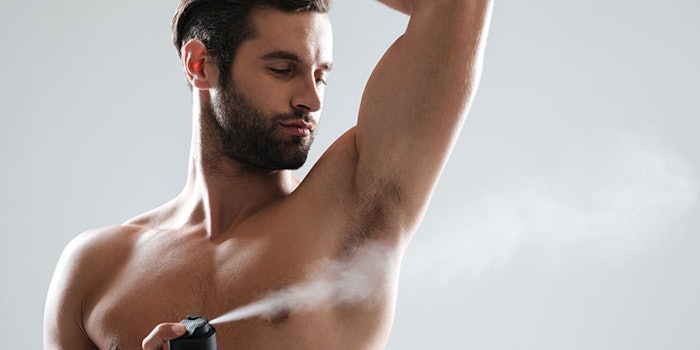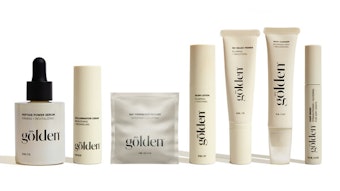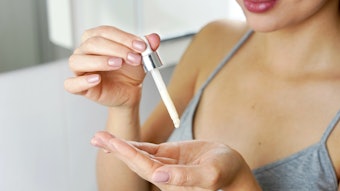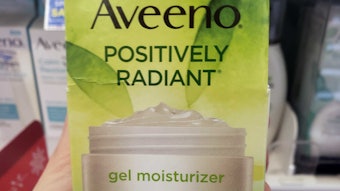
To read this article in its entirety, click through to your April 2020 digital magazine. . .
The formation of body odor begins with odorless human sweat that is mainly composed of water, but also contains small fractions of proteins and natural lipids. Natural skin microbiota will decompose such lipids and proteins to form molecules with a particularly low odor threshold. These molecules may include short chain fatty acids, such as 3-hydroxy-3-methyl-hexanoic acid (HMHA) or 3-methyl-2-hexenoic acid (3M2H); as well as organosulfur compounds, e.g., 3-mercapto-3-methyl-1-hexanol; even steroids such as androstenol or androstenone may be present.1
Managing body odor is typically achieved via three approaches, used separately or in combination: antiperspirants, deodorant actives and/or odor-masking agents. Deodorant actives, in particular, typically are used either to deodorize without the use of aluminum salts (antiperspirants), or to deodorize with low or no fragrance. Applying such actives in combination with other technologies can support lasting odor protection, which is what consumers expect from the ideal deodorant product.2
Deodorant actives mainly function as antimicrobials, selectively targeting the natural skin microbiota that decompose lipids and proteins and cause odor; for example, the antimicrobial triclosan, which often is used as the benchmark with which to compare modern actives. Triclosan represents a conventional organohalogen, i.e., organochlorine system; alternative non-organohalogen technologies include cosmetic ingredients such as farnesol,3 triethyl citrate4 and 2-methyl 5-cyclohexylpentanola.5-7
However, recent emphasis on the skin microbiome has underlined a lack of information about the impact of antimicrobial ingredients on the natural axillary microbiome.8, 9 As such, an ex vivo model10 was developed to uncover the influence of deodorant actives on the human axillary microbiome.11
The present article compares the effects of modern and conventional deodorant actives, i.e., 2-methyl 5-cyclohexylpentanol and triclosan, respectively, on the axillary microbiome. As a first step, the deodorizing performance of both actives was demonstrated in two clinical sniff tests. In the second step, researchers looked in greater depth at microbial levels, as well as the relative abundance of natural microbiota, by applying the novel ex vivo human axillary microbiome model.10
Experimental Design
Two in vivo clinical studies on human subjects were carried out, comparing armpits treated with 2-methyl 5-cyclohexylpentanol and triclosan, as well as untreated armpits. Evaluations were made by direct olfactory assessment (sniffing), as well as self-assessment by the subjects. The individual actives were applied using a volatile carrier system (pump spray).
2-methyl 5-cyclohexylpentanol vs. triclosan, 24-hr clinical: As stated, an olfactory assessment for malodor reductionb by each of the test products was carried out comparing them with one another and to the initial value. The assessment was conducted in a randomized, double-blind, half-side manner in the armpits of 20 subjects, ages 29 to 63 years, with distinct perspiration odor in the armpit.
The study began with a ten-day conditioning period during which subjects were only allowed to use unscented soap without antibacterial ingredients, and also excluding the use of antiperspirants, deodorants or other cosmetics. The subjects were instructed to wear clothing not treated with perfumed detergent or softener, and only subjects with an odor score of no less than 3, on a 0-5 scale (0 = no odor, 5 = very high odor), were allowed to take part in the study.
After the conditioning period, 6 hr after washing and 24 hr after washing (t0 = no product applied), a sniff assessment of the subjects’ armpits was performed by trained experts to establish the control. Next, half of the volunteers applied test formula A (2-methyl 5-cyclohexylpentanol spray) in the left armpit and formula B (triclosan) in the right (see Formula 1); the other volunteers applied the test products in the reverse order. After this single application, 6 hr and 24 hr later, sniffing assessments were again performed (t1 = single application). After the 24-hr assessment, subjects applied the test products in the morning and evening for four additional days, ending in one last application on the morning of the fifth day. Again, 6 hr and 24 hr after the last application, sniffing assessments were performed (t11 = 11 applications in total).
2-methyl 5-cyclohexylpentanol vs. untreated, 48-hr clinical: Sensory evaluation of the clinical efficacyc of the 2-methyl 5-cyclohexylpentanol deodorant versus untreated armpits also was conducted. In this case, sniff test assessments were made at 6 hr, 24 hr and 48 hr after the last application to the underarms of research subjects.
The assessment compared the left versus right armpit, with the product applied on the left and only washing on the right, or vice versa. The test product was in the form of a simple alcoholic pump spray comprising ethanol (96%) at 99.7% w/w and 0.3% w/w of 2-methyl 5-cyclohexylpentanol.
Axillary odor was determined, again, through direct sniffing/olfactory assessment of the armpits by three trained assessors per the sensory olfactory method ASTM E1207-14 Standard Guide for Sensory Evaluation of Deodorancy. The sniffing results were rated on a 10-point scale from 0 (no bad odor) to 10 (extremely strong odor).
Thirty subjects, ages 29 to 60 years (mean age 50 ± 9), took part in this study. It began with a 7-day conditioning phase in which the subjects used only a neutral soap (cleaning agent) supplied by the institute, having no bactericidal action. A control for residual aluminum in the armpits also was performed, and only those without residual aluminum took part in the study.
The study was carried out by applying a controlled amount of the investigated product (0.5 g) in one of the armpits by spraying after controlled washing. After application, the subjects were instructed not to wet, wash or pass any underarm product for the next 48 hr and to not remove the white cotton shirt provided until the final evaluation of axillary odor was assessed.
Human axillary microbiome model: Finally, as noted, a human axillary ex vivo microbiome model was developed and validated by the authors’ company. Based on fresh human sweat from eight healthy subjects, ages 39 to 64 years (mean age 55 ± 9), the pre-sampled sweat was pooled, aliquoted and mixed with the respective test substance (deodorant active). Afterward, the samples were assayed at 0 hr and 24 hr after being incubated under controlled conditions at 37°C. Microbial analyses was carried out in two ways:
1. Microbial load; i.e., aerobic and anaerobic colony forming units (CFU). Here, petri dishes containing plate count agar were aerobically inoculated with 100 μL of diluted sweat samples and incubated for 48 hr at 37°C under either aerobic or anaerobic conditions. The number of bacterial colonies was assayed and the means of at least two technical replicates were calculated.
2. Microbiome composition; i.e., bacterial amplicon sequencing (16S rRNA gene). The sequencing and bioinformatical evaluation was performed by a third partyd, wherein DNA was isolatede and PCR was performed on variable regions 3 and 4 of 16S rRNA gene. Sequencing was performed with a reagent kitf and quality of run was 83.05%. The resulting data was compared with the NCBI Bacterial 16S rRNA database and ordered according to presence of genus information. The 20 most abundant genera—adding up to 99.4% of all detected amplicon sequence variants (ASVs)—were selected based on total abundance in all experiments and visualized by their relative abundance.
Results: 24-hr Deodorant Efficacy
Results from the 24-hr clinical studies of deodorant efficacy are shown in Figure 1. According to the expert graders, the triclosan product showed a significant reduction (p ≤ 0.05) in body odor at 6 hr and 24 hr after single and multiple applications, in comparison with initial values. The same effect was observed at 6 hr with the test product containing 2-methyl 5-cyclohexylpentanol; however, at 24 hr after regular application, no significant difference was noted in comparison to the initial value.
In self-assessments, a significant difference was reported by the subjects for the 6-hr value after multiple applications for both test products, and for the 24-hr value of the test product using triclosan in comparison to the initial value. For the comparison of products with each other, no significant differences in body odor were documented.
. . .Read more in our April 2020 digital edition. . .
References
- Natsch, A. (2015). What makes us smell: The biochemistry of body odor and the design of new deodorant ingredients, CHIMIA 69, 414-420.
- Content Marketing Institute (CMI). (2020). Cosmetic ingredients consumer database. Symrise AG subscription.
- Symrise AG. (2019, Nov 11). Farnesol; Nature-identical sesquiterpene alcohol. https://www.symselect.com/deodorants
- Niendorf, H. (2012, Sept). Natural deodorizing active for modern formulations. Personal Care Magazine, 39-42.
- Symrise AG. (2019, Oct 11). SymDeo B125; Patented highly effective deodorant active. https://www.symselect.com/deodorants
- Pesaro, M., Diesing, B., Schmaus, G. and Pillai, R. (2011, Dec). 2-Methyl 5-cyclohexylpentanol: Development of a novel deodorant agent. SOFW Journal, 137 61-68.
- Kuhn, W., Wöhrle, I., Dilk, I., Ewering, Ch., Mampel, J., Krohn, M. and Zinke, H. (2009, Apr 28). EP2424829 B1, US8623340B2, BRPI0924661B1….Omega-Cyclohexylalkan-1-oles and use thereof as antimicrobial actives to combat body odor. http://www.freepatentsonline.com/8623340.html
- U.S. National Institutes of Health. (2019, Oct 11). Human Microbiome Project. https://hmpdacc.org/
- The Human Microbiome Project Consortium. (2012). Nature 486, (7402) 207-214 and 215-221.
- Nordzieke, S., Diesing, B., ... Koch, C., et al. (2019). The good, the bad and the smelly–Developing a representative model for the human axillary microbiome. Annual Conference of the Association for General and Applied Microbiology, poster, Mainz, Germany.
- Nordzieke, S., Diesing, B., ... Koch, C., et al. (2019). Going ex vivo–Applying a representative model for the human axillary microbiome. 25th IFSCC Conference on Cosmetic Science and Conscience, poster, Milan, Italy.
- Haustein, U.-F., Herrmann, J., Hoppe, U., Engel, W. and Sauermann, G. (1993). Growth inhibition of coryneform bacteria by a mixture of three natural products. Farnesol, glyceryl monolaurate and phenoxyethanol. HGQ. J Soc Cosmet Chem, 44 211-220.
Captions/Footnotes:
a SymDeoB125 (INCI: 2-Methyl 5-Cyclohexylpentanol), Symrise
b Institute Dr. Schrader in Holzminden, Germany
c Kosmoscience Ciência & Tecnologia Cosmética Ltda, Brazil.
d CeMeT GmbH, Tübingen, Germany
e Qiagen MagAttract PowerSoil DNA Kit
f MiSeq Reagent Kit v3 (600 cycles)











